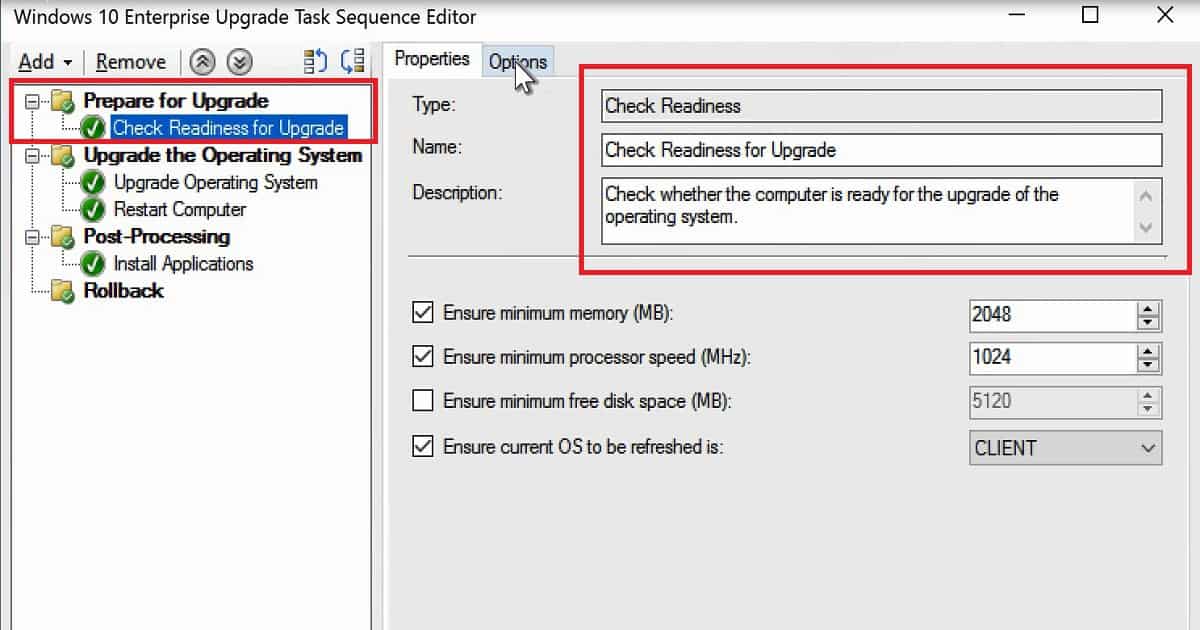
- Windows 10 Deployment Software
- Deploy Windows 10 Updates With Sccm
- Deploying Windows 10 With Sccm Step By Step
- Deploy Windows 10 With Sccm 2016
- Deploy Windows 10 With Sccm 2012 R2
- [Instructor] System Center Configuration Manager…has additional features that are not available…for previous versions of Windows Clients,…that only affect Windows 10.…Let's discuss those here.…System Configuration Manager now has the ability…to differentiate a Windows 10 computer…that connects to Windows Update for Business,…for Software Update Management,…versus the computers connected to Windows…Server Update Services for Software Update Management.…
But I suspect I'm going to have to upgrade that in order to install any updates to Windows 10. What version of SCCM do you think I need at a minimum to upgrade to to be able to deploy updates to Win10? From what I am reading, I am thinking 1606 is the answer. I know 1702 is the latest, but my current SCCM server runs on Windows 2K8R2 and 1702. Windows 10 deployment rings are quite similar to the deployment groups created for version upgrades. In general, Deployment Rings are the method by which devices are separated into a specific timeline. With Windows 10, you construct deployment rings a bit differently in each servicing tool, but the concepts remain the same. Why SCCM Deployment. Deploying Windows 10 with SCCM - Training I am looking for training on different ways to deploy Windows 10 through SCCM. I have done some research on Zero Touch Deployments, using MDT, and other deployment options.
We're going to discuss Windows Update for Business…in upcoming videos.…There's a new Windows Installer through…Mobile Device Management, that lets you create…and deploy Windows Installer based apps,…to enrolled PCs that run Windows 10.…If you want to deploy Windows 10 computers…using SCCM, there's some things that we need…to talk about.…Microsoft has used the Automated Deployment Kit…for quite some time now, but now there's a…Windows 10 Automated Deployment Kit.…

Now you need the Windows 10 ADK to capture and deploy…Windows 10 devices.…You might already have Windows 8.1 ADK…
Overview
Windows 10 Deployment Software
This guide is also available on my personal blog:https://setupconfigmgr.com/how-to-deploy-software-updates-using-microsoft-sccm.
In this video guide, we will be covering how you can deploy software updates in Microsoft SCCM. This covers important aspects of deploying updates such as collection structure, maintenance windows, automatic deployment rules (ADRs), deadlines, and much more. This will be a great follow up from my last blog Deep Dive in Microsoft SCCM Software Updates Client and Server Components
Deploy Windows 10 Updates With Sccm
Video Guide
Topics in Video
- Review Software Update Point Settings (Classifications, Products, Sync) – https://youtu.be/6JHJes1u8Pg?t=62
- Collection Structure for Software Updates – https://youtu.be/6JHJes1u8Pg?t=174
- Maintenance Window for Broad Deployment Collection – https://youtu.be/6JHJes1u8Pg?t=324
- Review Client Policies for Software Updates and Restarts – https://youtu.be/6JHJes1u8Pg?t=496
- Review Software Update Metadata – https://youtu.be/6JHJes1u8Pg?t=754
- Create Software Update Groups for Previous Years – https://youtu.be/6JHJes1u8Pg?t=813
- Creating Software Update Group for the Current Year by Month – https://youtu.be/6JHJes1u8Pg?t=1229
- Create ADR for Windows Defender Definitions – https://youtu.be/6JHJes1u8Pg?t=1430
- Review the ADR log RuleEngine.log – https://youtu.be/6JHJes1u8Pg?t=1749
- Deploy the yearly Software Update Groups to the Broad Collection – https://youtu.be/6JHJes1u8Pg?t=1905
- Create ADR to Create Monthly Software Update Groups Going Forward – https://youtu.be/6JHJes1u8Pg?t=2124
- Review Multiple ADR Deployments for Testing Stages and Production – https://youtu.be/6JHJes1u8Pg?t=3023
Notes From Justin
Deploying Windows 10 With Sccm Step By Step
- Cleaning Up Expired and Superceded Updates from Software Update Groups
- Since we are creating a new SUG each time the ADR runs, you will want to periodically go into your console and remove expired and superseded updates from your SUGs
- This process can be automated using Bryan Dam’s script – https://damgoodadmin.com/2018/04/17/software-update-maintenance-script-updated-all-the-wsusness/
- Another option is to search from “All Software Update” for Deployed = Yes and Expired = Yes. RIght-click all the updates found and choose “Edit Membership” and un-check all checked SUGs.
- Consolidating Previous Years Monthly SUGs
- Forgot to mention in the video, I do consolidate to previous years monthly software update groups when moving to the next year. This helps to keep the number of software update groups low.
- Content Distribution
- Don’t forget to distribute your software update packages to a distribution point. I forgot to mention this in the video.
- Software Update Point Installation
- YouTube Video Guide – https://youtu.be/vZpuBrs0LwM?t=248
- Keep WSUS Clean!
- Maintaining the WSUS Catalog by Declining Updates for Better Update Scanning –https://setupconfigmgr.com/maintaining-the-wsus-catalog-by-declining-updates-for-better-sccm-scanning
- Third-Party Software Updates in SCCM
- Patch My PC Third-Party Update Catalog – https://patchmypc.net/third-party-patch-management-sccm-scup-catalog
Deploy Windows 10 With Sccm 2016
Helpful Resources:
Deploy Windows 10 With Sccm 2012 R2
- Introduction to software updates in System Center Configuration Manager – https://docs.microsoft.com/en-us/sccm/sum/understand/software-updates-introduction
- Scan for software updates compliance process – https://docs.microsoft.com/en-us/sccm/sum/understand/software-updates-introduction#scan-for-software-updates-compliance-process
- Software update deployment packages – https://docs.microsoft.com/en-us/sccm/sum/understand/software-updates-introduction#BKMK_DeploymentPackages
- Software update deployment workflows (ADRs Vs. Manual) – https://docs.microsoft.com/en-us/sccm/sum/understand/software-updates-introduction#BKMK_DeploymentWorkflows
- Required system restart – https://docs.microsoft.com/en-us/sccm/sum/understand/software-updates-introduction#required-system-restart
- Deployment reevaluation cycle – https://docs.microsoft.com/en-us/sccm/sum/understand/software-updates-introduction#deployment-reevaluation-cycle
- Extend software updates in Configuration Manager – https://docs.microsoft.com/en-us/sccm/sum/understand/software-updates-introduction#BKMK_ExtendSoftwareUpdates
- Deploy software updates – https://docs.microsoft.com/en-us/sccm/sum/deploy-use/deploy-software-updates
- Manually deploy software updates – https://docs.microsoft.com/en-us/sccm/sum/deploy-use/deploy-software-updates#BKMK_ManualDeployment
- Automatically deploy software updates – https://docs.microsoft.com/en-us/sccm/sum/deploy-use/deploy-software-updates#automatically-deploy-software-updates
- Monitor software updates in System Center Configuration Manager – https://docs.microsoft.com/en-us/sccm/sum/deploy-use/monitor-software-updates
- Alerts for software updates – https://docs.microsoft.com/en-us/sccm/sum/deploy-use/monitor-software-updates#BKMK_SUAlerts
- Software updates synchronization status – https://docs.microsoft.com/en-us/sccm/sum/deploy-use/monitor-software-updates#BKMK_SUSyncStatus
- Software update deployment status – https://docs.microsoft.com/en-us/sccm/sum/deploy-use/monitor-software-updates#BKMK_SUDeployStatus
- Software updates reports – https://docs.microsoft.com/en-us/sccm/sum/deploy-use/monitor-software-updates#BKMK_SUReports